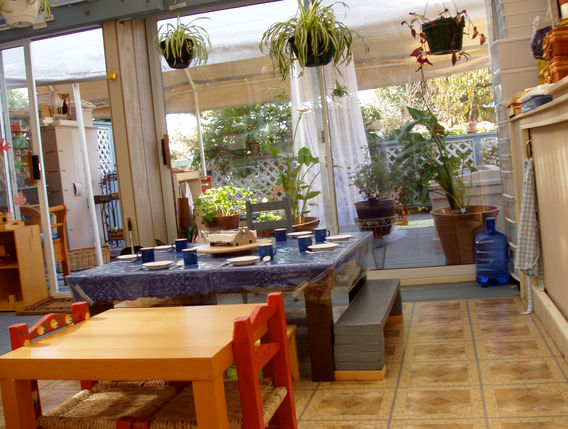
GLASSLIPER
Global Language Acquisition Supports for
Spanish Language Immersion Programs through Early Relationships
Meals
BeforE COVID19 (B4C19) mealtime played a large role in our Real Life Curriculum. Children helped prepare the food, pick flowers to arrange in vases, set the table, serve food family style, and clean up afterward. This was part of our daily community activities for personal care, caring for others and for our environment. This included using real dishes and cloths to be washed, composting food scraps, and recycling trash. So now, how do we maintain Extreme Hygiene and our ecological practices?
Mealtime Extreme Hygiene 2020 during the pandemic will not include family-style meals, but we can still make a choice between the all disposable alternative and the more laborious dishwashing and clean-up procedures.
For State-funded programs, the only alternative to family-style service is pre-plated dishes with all the minimum food requirements included for each child. This requirement is intended to expose children to healthy nutritional choices every day even if they refuse to eat the food provided. The saddest part is the daily disposal of so much uneaten food. We now support "farm to table"; my dream is to offer "table to farm" and send all those scraps back to Wilbur and Templeton at the pig trough!
If children bring their own preferred food from home, the teachers are responsible for making sure that each child is served appropriate portions from each food group, since few packed lunches include veggies or milk products.
So the consistent choice is in what we serve. We must offer healthy nutritional food that meets the requirements for each age group. The different choices are in how we serve and where we serve the food.
How we serve: disposable or real dishes; teacher-led or child participation; pre-set tables, cafeteria-style, or teacher served.
Where we serve: Inside or outdoors; private tables or group tables; from a counter or rolling cart.
1. Convenience: Disposable dishes or pre-packed trays and milk cartons. The children can pick up the food cafeteria-style or the teacher can set the food in front of each child. In a cafeteria, children can sit 6 ft. apart by marking the bench with tape. If an acrylic panel is placed down the middle of the table, then you can use both sides of the table.















